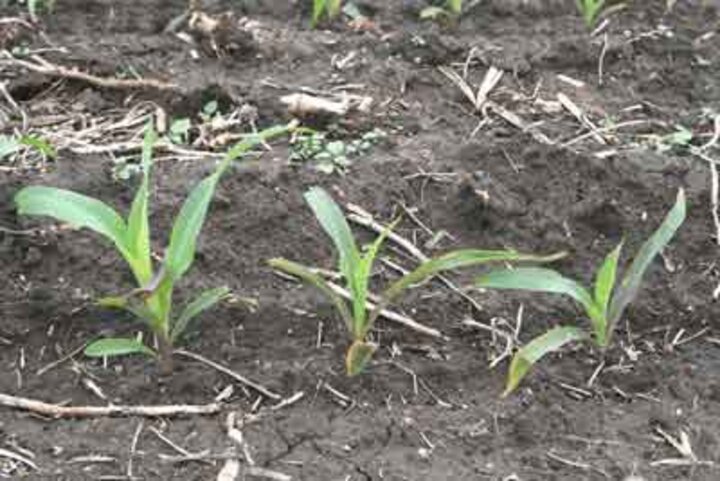
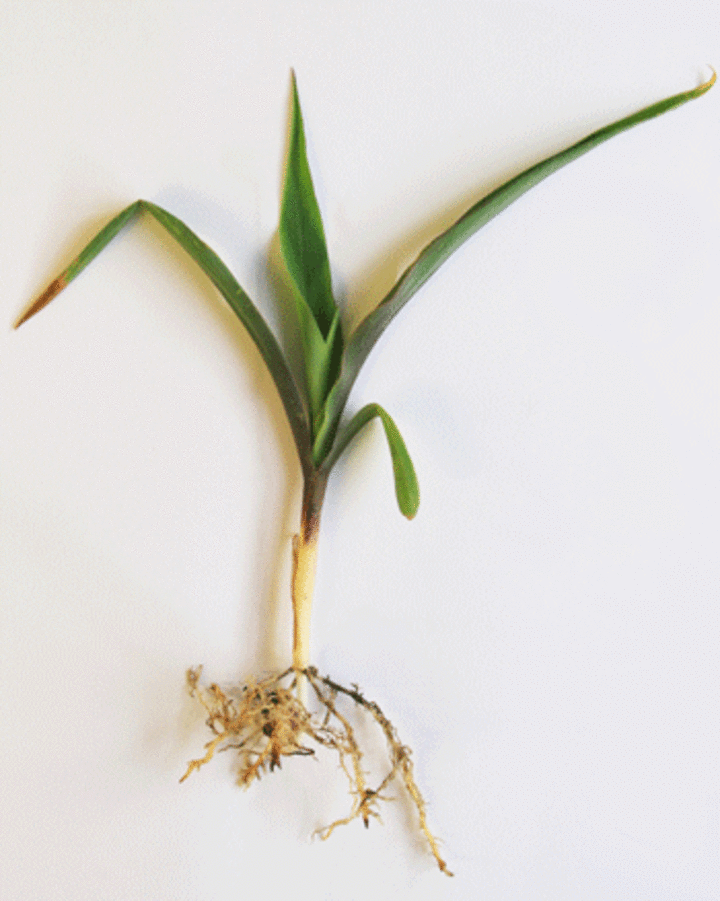
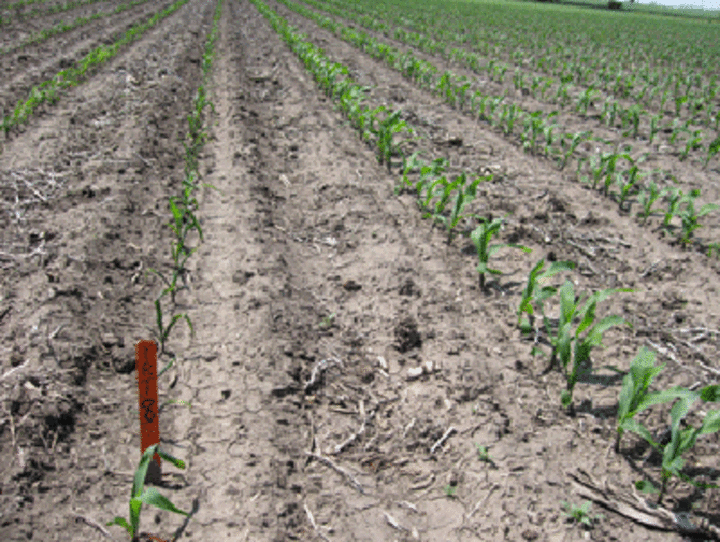
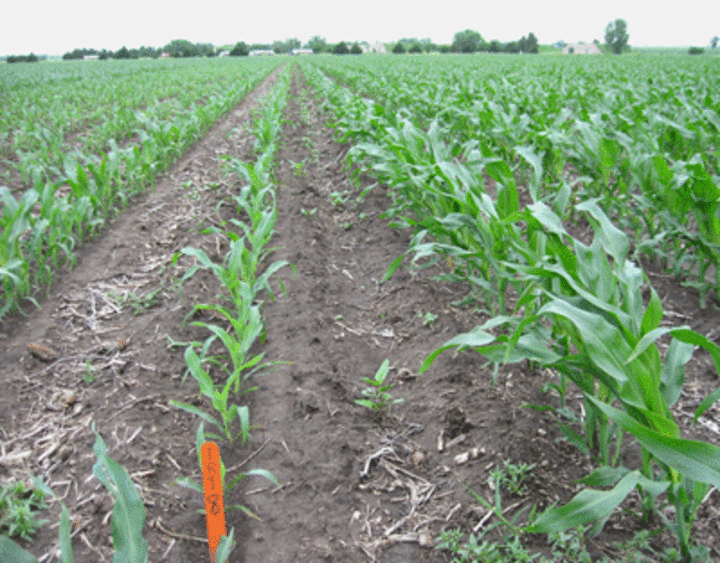
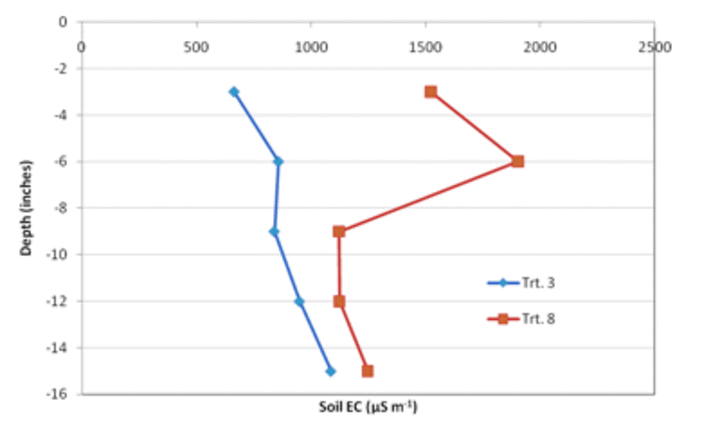
Several producers in south central and southeast Nebraska have reported incidences of young corn plants showing symptoms of ammonia burn to roots. Typically, roots experiencing excessive concentrations of salts or ammonia will have root tips which are blunted and brown or black (Figure 1). The plants will often be stunted and may have leaves which are purple or reddish-tinted.
While any band application of fertilizer at high rates near the germinating seed has the potential to cause damage, the problem appears more widespread than usual this year, and is most often associated with application of anhydrous ammonia. Most damage has resulted from spring preplant ammonia application, but some have reported damage from fall ammonia application.
Contributing Factors
The relatively dry spring in eastern Nebraska is the most likely cause. In a wetter spring, concentrated bands of fertilizer will dissipate further from the injection band, and salt and ammonia concentrations will be more dilute as roots grow into the band. The problem may be particularly likely with strip tillage, when anhydrous ammonia is injected in a band directly below where the seed will be planted. The tilled soil directly above the ammonia injection point will have a lower bulk density, thus allowing ammonia to diffuse further toward the soil surface than with typical knife injection.
Field Trial Occurrence
We have observed ammonia root burn with strip tillage in a study comparing fertilizer application methods at the South Central Agricultural Laboratory. Anhydrous ammonia was applied beneath the row location at a rate of 137 lb N/acre on March 19, and corn was planted on April 20 - a month after fertilization. On May 22, emerged plants were noticeably stunted, with some purple leaves, with the strip till fertilizer treatment (Figures 2 and 3). With cooler weather and some rainfall, plants on June 3 appear to be improving, though still stunted compared to other treatments with the same N rate (Figure 4). Plant populations have been reduced by 2% with strip till ammonia application compared to other methods.
Figure 5 illustrates soil electrical conductivity in the row as affected by two fertilizer treatments. Soil electrical conductivity is an indirect measurement of salts in the soil, in this case primarily influenced by fertilizer application. Treatment 3, which is UAN solution injected between rows, has much lower conductivity, and therefore dissolved salts, than Treatment 8, which is anhydrous ammonia injected below the row - particularly at depths of 3 and 6 inches. Both treatments had 2.5 gal/acre of 28% N UAN applied in-furrow as a starter. We will continue to monitor treatment effects throughout the season, and will measure treatment effects on yield this fall.
Management
At this point in the growing season, there are limited management options. Irrigation or rainfall will dilute salt concentrations in the fertilizer band. If salt-affected plants continue to show symptoms of damage, irrigate with an inch or two of water if possible. However, the best solution is to avoid creating potential for damage in the future by keeping fertilizer injection bands, other than low rate starter bands, several inches away from the seedling.
Richard Ferguson
Extension Soils Specialist
